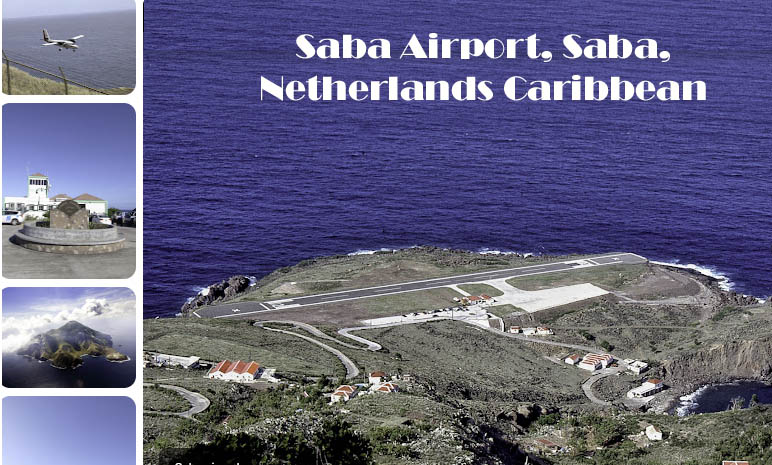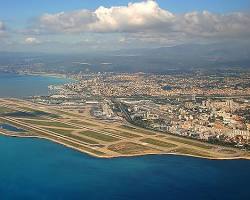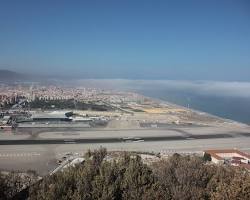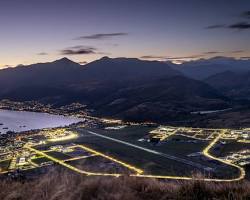“The World’s Most Scenic Airfields: Where Aviation Meets Natural Beauty” is a fascinating topic that combines the thrill of aviation with the breathtaking beauty of the natural world during the approach and departure. These airports are often located in remote or challenging locations, and their runways can be short and narrow, making for some exciting landings. Let’s explore some of these remarkable airfields in detail:
N0.1-Saba Airport, Saba, Netherlands Caribbean
Saba Airport, also known as Juancho E. Yrausquin Airport, is an airport on the Dutch Caribbean island of Saba. It is the shortest commercial runway in the world, at just 400 meters long. The airport is perched on a cliff overlooking the Caribbean Sea, and landings can be tricky due to the short runway and crosswinds. However, the views from the approach are incredible, with passengers treated to stunning views of the turquoise waters and lush green mountains of Saba.

The airport is located in the village of Zion’s Hill, on the southern tip of the island. It is about 2 kilometers from the main town of The Bottom. The airport is served by two airlines: Winair and St. Eustatius Commuter. There are daily flights to and from St. Maarten, and several flights a week to and from Sint Eustatius.
The airport is surrounded by a number of hotels, restaurants, and shops. There is also a car rental agency at the airport.
Here are some details about the runway and surroundings of Saba Airport:
- Runway length: 400 meters
- Runway width: 30 meters
- Runway elevation: 59 feet
- Runway surface: Asphalt
- Runway orientation: 12/30
- Surrounding terrain: Cliffs and mountains to the south, Caribbean Sea to the north
The airport is located in a remote area, and there are no public transportation options to and from the airport. Visitors must either rent a car or take a taxi to and from the airport.
Here are some tips for flying into Saba Airport:
- Book your flight in advance, especially if you are traveling during peak season.
- Arrive at the airport at least two hours before your flight is scheduled to depart.
- Be prepared for a challenging landing, especially if there are crosswinds.
- Enjoy the stunning views from the approach!
No.2-Donegal Airport, Ireland
Donegal Airport is a regional airport located on the northwest coast of Ireland, in the village of Carrickfinn, County Donegal. It is about a 15-minute drive from Dungloe and Gweedore, and 45 minutes from Letterkenny.
The airport has one runway, designated 03/21, which is 4,921 feet long and 100 feet wide. The runway is asphalt surfaced and is equipped with ILS and PAPI lighting systems.
The airport is surrounded by mountains and beaches, and offers passengers stunning views of the Irish countryside during their approach and departure. On a clear day, it is even possible to see the Scottish islands of Arran and Islay in the distance.
Here are some details about the surroundings of Donegal Airport:
- To the north of the airport is Donegal Bay, a large inlet of the Atlantic Ocean.
- To the east of the airport is the Slieve League mountain range, which includes Ireland’s highest sea cliffs.
- To the south of the airport is the Glenveagh National Park, a beautiful park with mountains, lakes, and forests.
- To the west of the airport is the Atlantic Ocean, with its rugged coastline and stunning views.
The airport is served by two airlines: Aer Lingus Regional and Loganair. There are daily flights to and from Dublin, and several flights a week to and from Glasgow.
Donegal Airport is a popular airport for tourists visiting the northwest of Ireland. The airport is also used by business travelers and by locals who need to travel to and from Dublin.
Here are some tips for flying into Donegal Airport:
- Book your flight in advance, especially if you are traveling during peak season.
- Arrive at the airport at least two hours before your flight is scheduled to depart.
- Be prepared for a scenic landing, with stunning views of the Irish countryside.
- Enjoy your time in Donegal!
N0.3-Nice Côte d’Azur Airport, France
Nice Côte d’Azur Airport (NCE) is an international airport located in Nice, France, on the French Riviera. It is the second busiest airport in France, after Paris-Charles de Gaulle Airport. The airport is served by over 70 airlines, and offers flights to over 100 destinations around the world.

Nice Côte d’Azur Airport has two runways, designated 04L/22R and 04R/22L. Runway 04L/22R is 2,960 meters long and 45 meters wide, while runway 04R/22L is 2,760 meters long and 45 meters wide. Both runways are asphalt surfaced and are equipped with ILS and PAPI lighting systems.
The airport is surrounded by the Mediterranean Sea to the south and the French Alps to the north. This offers passengers stunning views of the surrounding landscape during their approach and departure.
Here are some details about the surroundings of Nice Côte d’Azur Airport:
- To the north of the airport is the French Alps mountain range, which includes the Alps-Maritimes department.
- To the south of the airport is the Mediterranean Sea, with its beaches, coastal towns, and yachting marinas.
- To the east of the airport is the city of Nice, with its historic center, Promenade des Anglais, and museums.
- To the west of the airport is the town of Cagnes-sur-Mer, with its beaches, casinos, and art galleries.
Nice Côte d’Azur Airport is a popular airport for tourists visiting the French Riviera. The airport is also used by business travelers and by locals who need to travel to and from other parts of France and Europe.
Here are some tips for flying into Nice Côte d’Azur Airport:
- Book your flight in advance, especially if you are traveling during peak season.
- Arrive at the airport at least two hours before your flight is scheduled to depart.
- Be prepared for a scenic landing, with stunning views of the Mediterranean Sea and the French Alps.
- Enjoy your time in Nice!
No.4-Gibraltar Airport, Gibraltar
Gibraltar Airport (GIB) is a civilian airport located in the British Overseas Territory of Gibraltar, on the southern tip of the Iberian Peninsula. It is owned by the Ministry of Defence (MoD) and operated by the Royal Air Force (RAF) as RAF Gibraltar. Civilian operators use the civilian-operated terminal.
Gibraltar Airport is known for its unique location, with the runway jutting out into the Mediterranean Sea. Landings at Gibraltar Airport can be challenging due to the short runway and crosswinds, but the views from the approach are incredible, with passengers treated to stunning views of the Rock of Gibraltar and the Strait of Gibraltar. Due to short runway this airport if included among The World’s Most Scenic Airfields.

The runway at Gibraltar Airport is designated 09/27 and is 1,829 meters long and 45 meters wide. The runway is asphalt surfaced and is equipped with ILS and PAPI lighting systems.
The airport is surrounded by the Mediterranean Sea to the west and south, and the Rock of Gibraltar to the east. The Rock of Gibraltar is a popular tourist destination and offers visitors stunning views of the airport, the surrounding coastline, and the Strait of Gibraltar.
Here are some details about the surroundings of Gibraltar Airport:
- To the north of the airport is the Spanish border.
- To the south of the airport is the Mediterranean Sea, with its beaches, shipping lanes, and views of Africa.
- To the east of the airport is the Rock of Gibraltar, a limestone ridge that rises to a height of 426 meters.
- To the west of the airport is the Bay of Gibraltar, which is home to a number of marinas and yacht clubs.
Gibraltar Airport is a popular airport for tourists visiting Gibraltar and the surrounding area. The airport is also used by business travelers and by locals who need to travel to and from other parts of Europe.
Here are some tips for flying into Gibraltar Airport:
- Book your flight in advance, especially if you are traveling during peak season.
- Arrive at the airport at least two hours before your flight is scheduled to depart.
- Be prepared for a challenging landing, especially if there are crosswinds.
- Enjoy the stunning views from the approach!
Safety measures
Gibraltar Airport has a number of safety measures in place to ensure the safety of passengers and aircraft. These measures include:
- A short runway with a tailwind component.
- A runway arrestor bed at the end of the runway.
- A runway end safety area (RESA).
- Obstruction clearance zones.
- A strict noise abatement program.
- A bird strike prevention program.
- A modern air traffic control system.
Gibraltar Airport is a safe and well-operated airport. It has a good safety record and is committed to providing a safe and efficient service to its passengers.
No.5-Queenstown Airport, New Zealand
Queenstown Airport, also known as ZQN, is an international airport located in Frankton, Otago, New Zealand. It is the fourth busiest airport in New Zealand by passenger traffic, and is a popular destination for tourists and business travelers alike that’s the reason it is among The World’s Most Scenic Airfields.
The airport has one runway, designated 05R/23L, which is 6,204 feet long and 150 feet wide. The runway is asphalt surfaced and is equipped with ILS and PAPI lighting systems.

Queenstown Airport is surrounded by the Southern Alps mountain range, which offers passengers stunning views during their approach and departure. The airport is also close to the Kawarau River and Lake Wakatipu, which are two of the most popular tourist attractions in the Queenstown region.
Here are some details about the surroundings of Queenstown Airport:
- To the north of the airport is the Kawarau River, which is a popular spot for bungy jumping and jet boating.
- To the east of the airport is the Remarkables mountain range, which is a popular destination for hiking, skiing, and snowboarding.
- To the south of the airport is Lake Wakatipu, which is the longest lake in New Zealand and is a popular spot for swimming, boating, and fishing.
- To the west of the airport is the Shotover River, which is another popular spot for bungy jumping and jet boating.
Queenstown Airport is a popular airport for tourists visiting the Southern Alps region of New Zealand. The airport is also used by business travelers and by locals who need to travel to and from other parts of New Zealand.
Here are some tips for flying into Queenstown Airport:
- Book your flight in advance, especially if you are traveling during peak season.
- Arrive at the airport at least two hours before your flight is scheduled to depart.
- Be prepared for a scenic landing, with stunning views of the Southern Alps and Lake Wakatipu.
- Enjoy your time in Queenstown!
Queenstown is a world-renowned tourist destination, offering visitors a wide range of activities and attractions. From skiing and snowboarding in the winter to hiking, biking, and kayaking in the summer, there is something for everyone in Queenstown. The city is also home to a number of restaurants, bars, and shops, making it a great place to relax and unwind after a long day of exploring.
Other scenic airfields around the world include:
- Barra Airport, Scotland
- Courchevel Altiport, France
- Lukla Airport, Nepal
- Paro Airport, Bhutan
- Queenstown Airport, New Zealand
- Princess Juliana International Airport, St. Maarten
- Velana International Airport, Maldives
If you are looking for a truly unforgettable flying experience, be sure to consider flying into or out of one of the world’s most scenic airfields. Just be prepared for some exciting landings!









